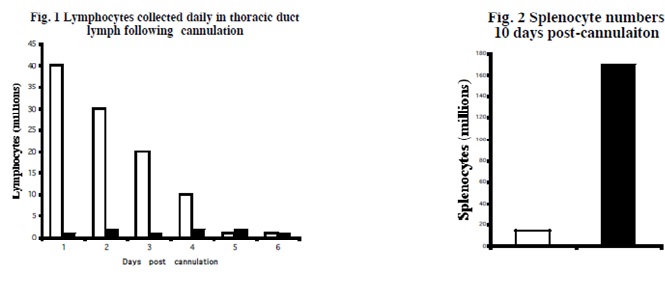Assignment:
Simple mechanistic hypothesis
One can create "knockout" mice that are missing a specific gene through a process called gene targeting. An investigator created such a mouse for a cell surface receptor expressed by the vast majority of B and T lymphocytes called Mel-14. After creating mice homozygous for this mutation (termed Mel-14-/-), she compared the number of B and T cells in the lymph nodes and spleen in wild type and Mel-14-/- mice.

Recall that lymphocytes recirculate between blood and lymph; and lymphocytes in each lymph node drain into the thoracic duct. To further characterize the Mel-14-/- phenotype, she performed a thoracic duct cannulation on groups of Mel-14-/- and wild type mice and collected and counted the number of thoracic duct lymphocytes (TDL) every 2 days over a 10 day period. Finally, after day 10, all cannulas were disassembled and the number of splenic lymphocytes in these mice determined. The data are summarized in Figures 1 and 2 (see file attached). Data from wild-type mice are shown in open bars; data from Mel-14-/- mice in closed bars.

Questions:
1. What can you conclude from this experiment? What is the reasoning supporting this conclusion based off data?
2. What is a simple mechanistic hypothesis regarding the role of Mel-14 in lymphocyte trafficking that is consistent with these data?
3. What is one more experiment that would explore the validity of this proposed hypothesis. What would be the result you would expect if this hypothesis were correct?